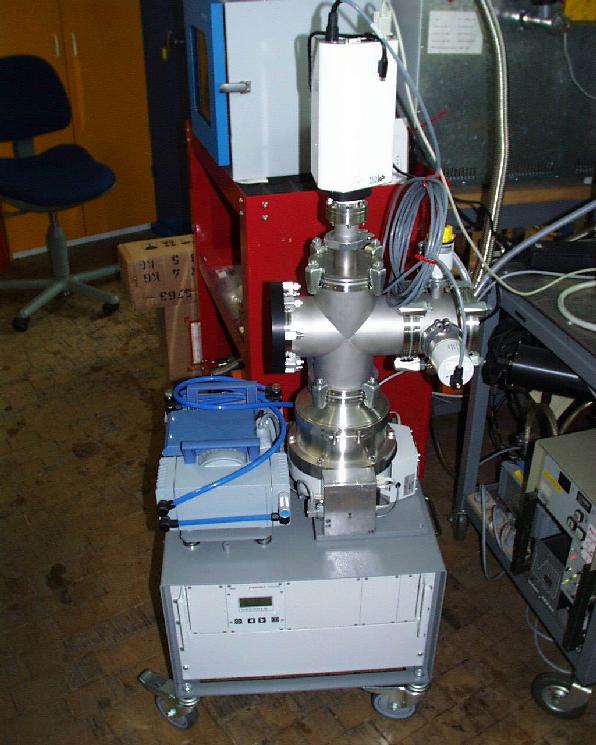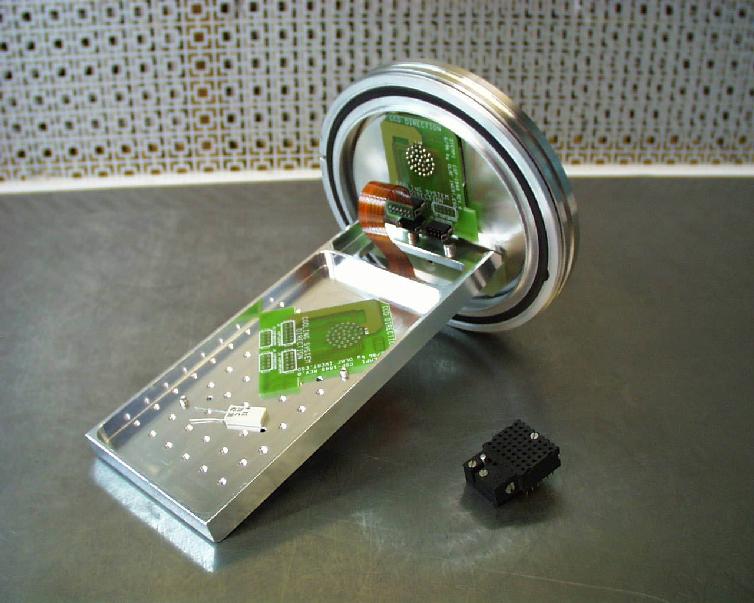Outgassing of CCD components in the Vacuum
Experimental Setup
We used a cylindrical tube (approximately 30 cm in length and 10 cm in diameter) as a vacuum chamber. A residual gas analyzer ("Pfeiffer QMS 200 F2") reached into the chamber from the top. At the bottom of the chamber was a turbo-molecular vacuum pump. The mass spectrometer was operated by a computer. The entire configuration is shown on the left image.
From one end of the tube, the probes were inserted onto a probe holder, which is shown on the right image. By attaching a heat resistor on the bottom and an electric control from outside, the emission from the probes at different temperatures could be measured. We used five nearly equidistant temperature steps from 25° C to 115° C.
To exchange a probe, the turbo-molecular pump had to be switched off and the experiment chamber was filled with nitrogen gas to reach the environmental pressure and to keep it as clean as possible from other gases. The tube was opened for a short time and the new probes were inserted onto the probe holder. Afterwards the vacuum pump was switched on again. As air contaminants will enter the probe chamber during this procedure, some time had to be allowed before starting a spectral scan of the probe.
We used the varying temperatures to speed up the outgassing of the devices. Over night, the probe holder was cooled down before insertion of a new probe.
 |
 |
| The Experimental Setup: On top the residual gas analyzer, below the cylindrical probe chamber and at the bottom the turbo-molecular pump. |
Probe Holder: Placed onto the probe holder the components are inserted into the experiment chamber. |
